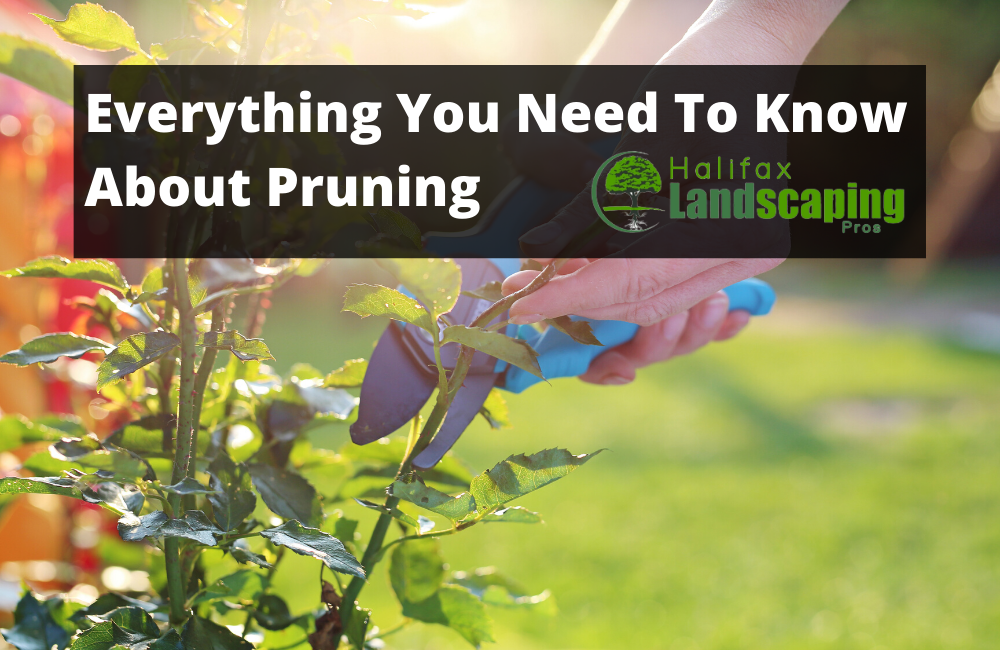Pruning is essential to maintaining the health of your plants and keeping them attractive. It can also protect you and your property from hazardous branches and other unwanted plant growth. Likewise, pruning can stimulate new growth, which is especially helpful if you have flowering and fruiting plants.
It’s a tedious part of shrub and tree care, but it shouldn’t be overlooked. Before you haphazardly hack away at your plants, here are a few essential things you should know about pruning.
Table of Contents
How do I start pruning?
Start pruning by removing broken or diseased branches. Remove the dying branches off of the body of the plant, well below the affected areas. That will usually prevent the disease from spreading throughout the plant.
If two branches are competing or entangled in each other, cut the smaller branch off at the base. It’s also wise to cut off vertically-growing branches. Pruning allows sunlight and air to penetrate to more vital parts of your trees and shrubs, keeping them as healthy as possible.
You should also remove low-hanging branches that could block walkways or otherwise be hazardous to people and your property.
When should I start pruning?
Cleaning up your garden in the fall may tempt you to start cutting up a few branches from your trees and hide their now-bare imperfections, but there’s one essential tip to pruning in the fall: don’t do it.
In the fall, trees and shrubs shed their leaves to prepare for dormancy—they want to remain inactive until it’s time for spring. However, because pruning stimulates growth, it causes the plants to exert energy when they should be starting to conserve it. That causes the plant to weaken, be more susceptible to winter injuries, and possibly not survive the winter. You have to remember that trimming in the fall may just be the downfall of your trees.
As your plants’ beautiful leaves begin to regrow in late spring, their energy reserves can also be compromised, making them weaker and more susceptible to disease and damage. Therefore, trimming in late spring is also not advised.
Generally, the best time to prune is from late winter to early spring. You can prune plants that bloom in the early spring, like the Japanese magnolias or lilacs after they’re done flowering—these only require a light pruning.
Overgrown deciduous trees and shrubs are best pruned in the winter. Some sappy plants, including maples and dogwoods, can benefit from pruning in the summer because they ooze a significant amount of sap in the winter. Pine trees and evergreen shrubs can take a light pruning in mid-summer.
It’s also important to avoid pruning when it’s wet and damp out because that causes diseases to spread more easily. Bacteria and fungi thrive in moist environments, so it’s best to wait until the sun can dry out these microorganisms.
What else should I know about pruning?
There are many tools you can use to trim your plants, but it’s always important to keep them clean to avoid spreading diseases. Clean and disinfect your tools after each tree, especially if you’ve been pruning off diseased branches. Disinfecting your tools with hot and soapy water can do the trick, but be sure to dry your tools afterward.
Tree pruning can sometimes be a dangerous task, especially if you’re dealing with thick, heavy branches, or branches close to electrical poles. You would be at risk of falling, damaging your property, or being electrocuted. In these cases, it’s best to hire professionals to do the pruning for you.
Conclusion
Having a piece of paradise right by your home is a blessing that not many people have, but that little oasis needs proper care and attention to thrive. While fertilizers, water, and sunlight help them grow, specific processes, such as pruning, are also necessary. Pruning maintains your plants’ health and keeps your property safe, so it’s best to know how and when to prune properly.
If pruning isn’t for you, never hesitate to call on the help of our specialists. We offer you the best landscape contractors in Halifax, guaranteeing craftsmanship, and excellent service at all times!
Why use Halifax Landscaping Pros?
If you are looking for a reliable Halifax Tree Trimming Company that will cater to your dreams and landscape design inspirations, look no further than our team. With decades of experience under our belt, we will ensure the level and quality of our work, each and every project.
Landscape Design Company, & Landscaping Services in Halifax, NS
We offer a full range of landscaping services from Lawn care to landscape design to the entire Halifax Metro area and HRM.

